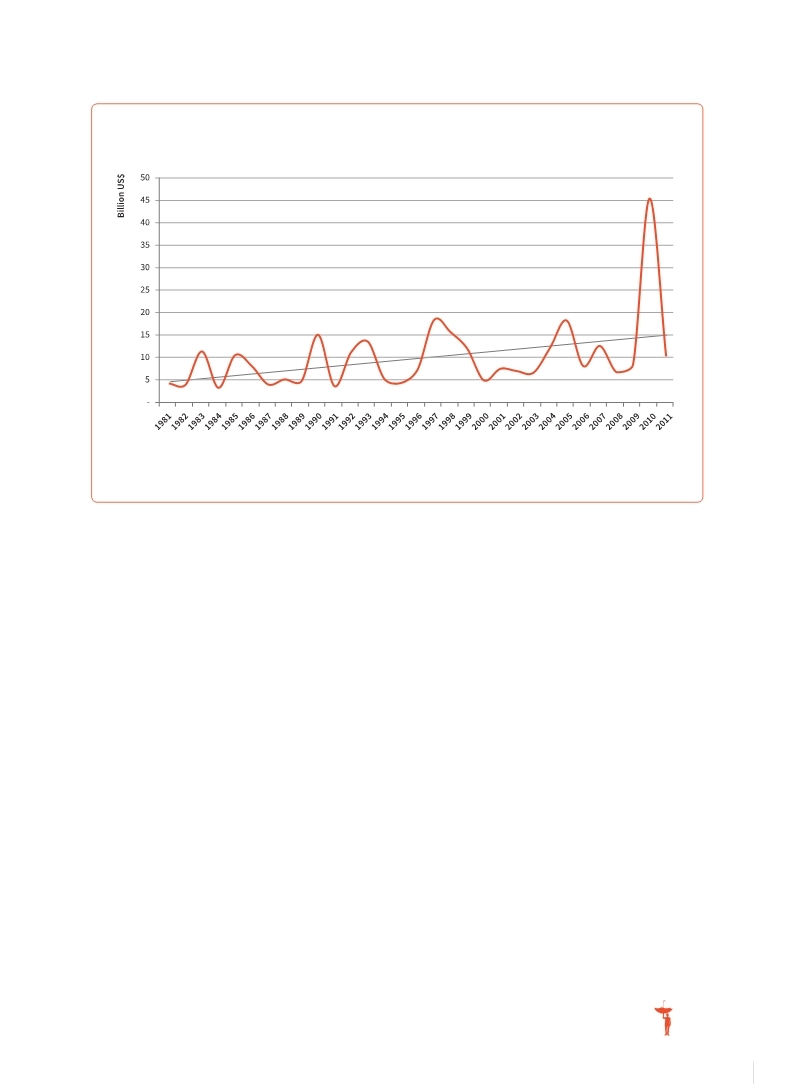 |
Global Assessment Report on Disaster Risk Reduction 2013
From Shared Risk to Shared Value: the Business Case for Disaster Risk Reduction |
 |
Global Assessment Report on Disaster Risk Reduction 2013
From Shared Risk to Shared Value: the Business Case for Disaster Risk Reduction |
|
|


|

39
(Source: UNISDR, based on DesInventar and EM-DAT combined datasets)
Figure I.2 Loss trends in 40 countries as estimated from national and global loss databases, 1981–2011 (in billion US$)vii
existing publicly available data. The detailed methodology used to model and estimate economic losses is described in Annex 2.
Between 1981 and 2011, total direct losses in these countries were approximately US$305 billion, of which internationally reported events represent about 67 percent. The implication is that the headline-grabbing figures recorded in global datasets over the last decade may be quite conservative. Once the losses associated with nationally reported smaller disasters are included, those figures are likely to be at least 50 percent higher. At the same time, these figures refer only to direct losses and thus exclude the cost of indirect losses and wider effects of disaster.
As Figure I.2 shows, disaster losses in the same set of countries have been trending upward over this period.
The chapters that follow in Part I explore how investment decisions and capital flows are internalising disaster risk in different kinds of capital stock, thereby increasing the overall stock of risk.
Chapters 2 and 3 examine the new landscape of intensive and extensive risk and present results from the new global risk model for earthquakes and tropical cyclones, as well as new exposure data for tsunamis and regional examples for floods and landslides.
Chapter 4 features an analysis of the scale of economic losses associated with extensive risk, and Chapter 5, the implications for a country’s economic and financial resilience.
The risks to natural capital posed by wild-land fires, land degradation and agricultural drought are presented in Chapter 6, and the special case of Small Island Developing States in Chapter 7.
|



 |
